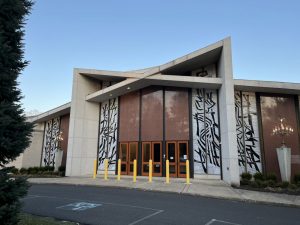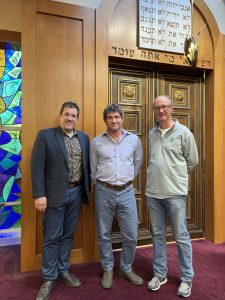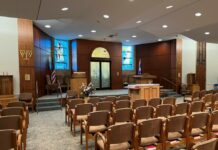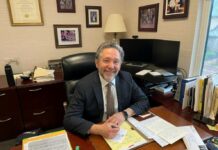
To a woman or man, Congregation Adath Jeshurun members seem to enjoy walking in the doors of their Old York Road synagogue.
“I absolutely love the people,” said Judy Stutman Izes, 60, a congregant for 18 years.
“It’s the place I’m most comfortable,” added Sima Sussman, 82, a member since 1976. “It reflects the rhythm of my Jewish life.”
“It’s really our community,” said David Reibstein, 48, a lifelong congregant.
But it’s a question as open as Adath Jeshurun’s doors whether the Conservative shul will still be there in a generation or two. At 48, Reibstein is one of the congregation’s youngest members. A community that once counted about 1,200 households is now down to less than 400, and 80% of them are older and without children in the pre- and religious school programs, according to synagogue leaders.
Rabbi Shai Cherry, Hazzan Howard Glantz and President Howard Levin are doing what many shuls in the Philadelphia area are doing in this era: trying to figure out how to attract young members. Glantz believes that Adath Jeshurun leaders at least understand the approach they need to take. Synagogues used to be able to say, “We’re here, come meet us where we are,” recalled the cantor, now in his 19th year at the Elkins Park shul. “And that’s not necessarily working for everybody, so we want to meet them where they are,” he added. “And be there for them.”
“And it’s not essential that we have 50-100 people at a program for it to be successful,” Glantz said. “You have more time to interact and get to know them.”
Cherry, who prefers to go by Rav Shai because Rav is Hebrew for teacher, stepped out of the higher education world to take his first pulpit position with Adath Jeshurun in 2019. He was inheriting the legacy of a synagogue with more than 160 years of history. He also was taking on the responsibility left to him by a trio of rabbis, Max Klein (1910-’60), Yaakov Rosenberg (1960-’78) and Seymour Rosenbloom (1978-2014), who each guided Adath Jeshurun through entire eras.
But Cherry wanted this challenge. After three decades of teaching, he was interested in a rabbi position at a shul with a long history, but also with an openness to 21st-century experimentation. Then he noticed on a job bulletin board for Conservative rabbis that the AJ position was open. With the synagogue going through a strategic initiative called “AJ New Way Forward,” it seemed like the right fit.
Then he arrived and discovered that East Coasters held a reverence for their rabbi that he had not seen out west.
“They have a respect for the person of the rabbi, the position of the rabbi, that I was pleasantly surprised to discover,” he said. “I think on the West Coast there is not the same relationship that most congregants have with their rabbi.”
But that also meant that members were looking to the rabbi to lead AJ’s new way forward. And over his four years, even through COVID, he has attempted to do that. According to Glantz, the goal of the new strategic plan is to give people choices.

Cherry and the cantor started holding more “retro services” in the Conservative tradition, with a professional choir and organ, throughout the year. They also began to host more Friday night services at which Glantz played guitar and sang “all the way through.” They even added prayer sessions that focus on how “themes of particular songs map onto themes of the liturgy,” as Cherry explained it. Outside of services, Cherry has added hiking and environmentalist groups to the synagogue community.
“People want different things,” Levin said.
The president, the rav and the cantor, though, were not shy about admitting that they do not have all the answers. They are just trying to meet people where they are and give them choices. And as long as there are still members like Stutman Izes, Sussman and Reibstein, it will be worthwhile to try.
“They do know that we hear them; that we want to be there for them; and that we will work for them to make their spirituality enhanced,” Glantz said.
Cherry mentioned that, after almost every event, two or three people will reach out to say how much it meant to them.
“We have a pretty good sense that we are helping people grow religiously and spiritually,” he concluded. ■






